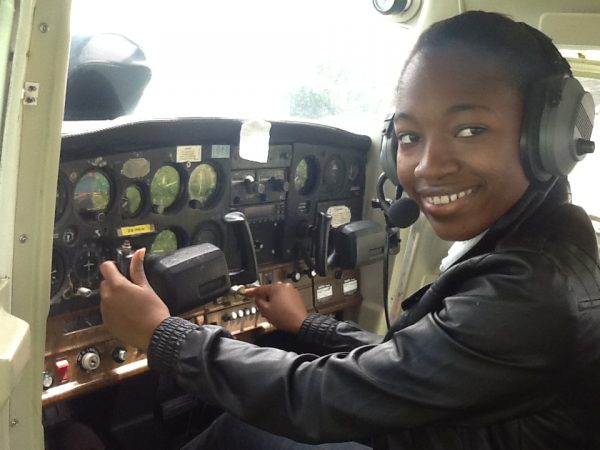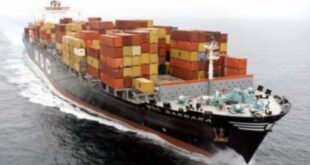
Airline pilots fly aircraft according to set schedules to transport cargo and people. Commercial pilots might fly charter flights or those used for firefighting, crop dusting, or rescue purposes. Hazards that pilots might face include weather, fatigue, and extreme noise. There are many kinds of aircraft that pilots may fly, including airplanes, helicopters, balloons, and gliders. While pilots have irregular schedules, airline pilots may have the opportunity to fly to exotic destinations.
Step 1: Complete Flight School Training
Individuals interested in becoming an aircraft pilot will first need to determine what type of aircraft they want to fly. The FAA offers several types of pilot’s licenses, including private pilot, recreational pilot, and sports pilot. The types of aircraft that people fly include airplanes, helicopters, balloons, airships, and gliders.
Next, aspiring aircraft pilots need to attend an FAA-certified flight school or take private lessons from an FAA-certified instructor. These programs may be found at flight training schools, community colleges, and technical schools. Topics covered include basic aerodynamics, aircraft components, and flight controls, FAA regulations, aircraft weight and balance, basic navigation, flight planning, and aircraft systems. Every hour of training and flight instruction is logged to ensure new pilots have completed the minimum hours needed to learn how to fly an airplane.

Step 2: Earn a Private Pilot’s License
Along with a minimum amount of flight hours, students need to demonstrate sufficient skills and knowledge to their flight instructor before they may earn an FAA private pilot’s license. This license, also known as a certificate, will allow them to fly an aircraft and carry passengers and baggage without compensation. Individuals will need to earn a commercial pilot’s license to get paid to transport people and property.
To earn a private pilot’s license, individuals must be at least 17 years old. Private glider pilots or free flight balloon operators must be at least 16. An FAA medical certificate is required. Aspiring pilots must pass a written exam and complete at least 40 hours of flight training. Half of this training must be with a flight instructor, and at least 10 hours must be in solo flight time. A practical flight test is also required.
Step 3: Earn a Commercial Pilot’s License
In order to be compensated for transporting people and property, pilots should obtain a commercial license. Applicants must be 18 years or older. While in training, students should be prepared to keep detailed logs of both their in-flight hours as well as their on-ground hours. Students should reference the Federal Aviation Regulations (FARS) for specific requirements. In order to receive a commercial pilot’s license, students must pass a variety of exams, including both a medical and physical exam (pilots must have 20/20 vision or employ corrective eye wear), a comprehensive written exam, and a flight exam where students can demonstrate their practical knowledge of flying an aircraft. Once pilots have obtained their license, they must pass regular physical screenings and practical flight tests in order to keep the status of the license up-to-date. Commercial pilot licenses apply to airplanes, balloons, helicopters, and other aircraft.
Step 4: Seek Employment
Individuals with a private pilot’s license may seek employment as a pilot. According to job postings for aircraft pilots, employers seek pilots to test new aircraft, develop flight simulation programs, and conduct national security missions. Employers preferred pilots with several years of flight experience and various pilot licenses.
Aspiring aircraft pilots should consider a degree program. According to the U.S. Bureau of Labor Statistics (BLS), most pilots employed by airline companies hold a bachelor’s degree; the degree can be in any subject. Some universities even have 2- to 4-year aviation programs that provide training for aspiring pilots.
Step 5: Advance in the Field
Regarding promotion, airline pilots follow a ranking system, much like that of officers in the army, that requires pilots to gain years of experience in order to advance. Entry level pilots must have up to 5 years of experience before qualifying for a position as a first officer, the next rank in line. Becoming a captain, the next rank after officer, may take another 5 to 10 years of experience. Captains may then take higher level positions that branch out of the seniority system, such as chief pilot or director of the aviation department for an airline.
To summarize, aspiring aircraft pilots need to attend an FAA-certified flight school or take private lessons from an FAA-certified instructor and complete a minimum number of flight hours and a written exam and flight test. Licensure is required, and some individuals might choose to earn an aviation degree.
How a pilot is expected to behave
It takes more than just passive listening, taking theory exams and accumulating flight hours to become a competent pilot. Therefore, the aviation industry has already started to adopt a new way of pilot training, based on the development of competencies. This is how the MPL training course was born, where a standardized set of competencies must be developed to a defined level of performance rather than just performing the tasks.
BAA Training, one of the TOP 3 biggest independent aviation training centres in Europe, has also added MPL training to its pilot education program and starts to conduct this competency-based training in August. So, what are those competencies and what is expected from a student after they have acquired their MPL licence?
What is competency?
Let’s start at the very beginning. According to job industry experts, competency itself is a dimension of human performance that is used to reliably predict successful performance on the job. A competency is manifested and observed through behaviours that mobilize relevant knowledge, skills and attitudes to carry out activities or tasks under specified conditions. In the aviation field, trainees have to successfully demonstrate competency by meeting the associated standards.
According to EASA, European Union Aviation Safety Agency, a training provider must ensure that their course design develops the required 9 core competencies of MPL(Multi-Pilot Licence) course through their training and assessment plan based on the competency framework which we will overview in the following paragraphs.
Competency 1: Aeroplane Flight Path Management, Automation
Let’s start from the Aeroplane Flight Path Management, automation (FPM-A) competency, which enables a pilot to control the aircraft flight path through automation. By developing this competency, a student is expected to use appropriate flight management, guidance systems and automation, installed and applicable by the airline. He or she will also be able to monitor and detect deviations from the intended flight path and react quickly by taking an appropriate action.
After acquiring this competency, an aspiring future pilot will safely manage the flight path in order to achieve the most optimal operational performance. A trainee will be able to maintain the intended flight path during a flight using automation while managing other tasks and distractions.
Time is one of the most important factors in aviation. Therefore, FPM-A competency will allow a future pilot to appropriately and quickly select a level and mode of automation while considering the phase of flight and workload.
Competency 2: Aeroplane Flight Path Management, Manual Control
While developing the Aeroplane Flight Path Management, manual control (FPM-M) competency, a student is taught to control the aircraft flight path through a manual flight. The use of appropriate flight management, guidance systems and automation will be enhanced and the pilot will be able to manually control the aircraft, by taking into account its altitude, speed and thrust, as well as navigation signals or visual information. Other tasks, such as monitoring, managing and maintaining the flight path, effectively using flight guidance systems will be developed in order to optimize the operational performance.
Competency 3: Application of Knowledge
Another important competency, acquired is the Application of knowledge“, where a student is taught to apply his/her relevant knowledge in the operational environment and in scenario settings. While going through the path of this competency, the most attention is allotted to acquisition, application and correct identification of aviation knowledge. Mathematics, needed for operational situations, are also taught and developed there.
Competency 4 : Application of Regulations and Procedures
Every competent pilot must be able to identify and apply appropriate procedures in accordance with published operating instructions and applicable regulations. With this competency, a student will be able to identify, follow appropriate information and correctly operate, monitor the aircraft systems.
Competency 5: Communication
This competency is about developing a student’s ability to communicate through appropriate means in normal and non-normal situations. The main focus is on asking relevant and effective questions, ensuring the needed information is shared and received, choosing appropriately what, when, how and with whom to communicate. Understanding and interpreting all the information correctly as well as listening or reading skills are also developed here.
Competency 6: Leadership and Teamwork
The main goal of developing leadership and teamwork competency is the ability to influence others so that they can contribute to a shared purpose. Also, this competency allows to appropriately collaborate in order to accomplish the goals of the team. A student must be able to create open communication, engage others and encourage team participation, show his/her initiative and give directions. Also, this competency teaches to give and receive constructive feedback, resolve conflicts in a constructive manner and, finally, exercise decisive leadership in all situations.
Competency 7: Problem-solving and Decision-making
Problem-solving and decision-making competency allows a student to identify problem precursors and resolve actual problems, using decision-making techniques, in a timely manner. Risks, priorities, fails, options, techniques are the main focus of this competency and the ability to effectively manage them is developed.
Competency 8: Situational Awareness (SA) and Information Management
Perceiving, comprehending, and managing information, as well as anticipating its effect on the operation is another important competency that must be acquired by every aviator. With this competency, a pilot will be able to monitor, identify and correctly manage the aircraft state and systems: energy state, flight path, the general environment of the flight and the aircraft and its gross errors. Additionally, a pilot will be taught to anticipate in each situation, develop effective plans based upon potential threats and respond to indications of situational awareness.
Competency 9: Workload Management
By acquiring workload management competency, an aspiring future pilot will be able to maintain available workload capacity through prioritisation and distribution of tasks, using resources. Self-control exercises, planning, time management, delegation and completion of tasks are mainly developed through this competency.
Culled from Study.com and Aerotime news hub
 MMS PLUS NG – Maritime, Aviation, Business, Oil and Gas News Online Newspaper with coverage in Maritime, Oil and Gas, Aviation, Power and Energy as well as Financial News
MMS PLUS NG – Maritime, Aviation, Business, Oil and Gas News Online Newspaper with coverage in Maritime, Oil and Gas, Aviation, Power and Energy as well as Financial News









